The combinability of creativity is as terrifying as financial compounding
Original Title: "Idea Legos"
Original Author: Packy McCormick
Original Compiler: Kxp, Rhythm BlockBeats
Ideas can be built upon each other like Lego blocks, which is very similar to applications. In other words, thoughts can also be combined with one another.
Composability is one of the main features of Web3, which Chris Dixon defines as "the ability to assemble and combine software components like building Lego blocks." At the beginning of a thematic tweet, he stated:

"The importance of composability in software building is akin to the importance of compound interest in finance."
The process of compound interest is the continuous accumulation of money, and given enough time, that amount can miraculously grow to several times its original value.
 Jack Butcher
Jack Butcher
Every time you earn interest, that interest has already begun to generate new returns for you. If you invest $100,000 in a bond at a 6% interest rate today, you can sit back and wait for it to grow to $1 million in 40 years. While compound interest is easy to quantify, we often struggle to internalize it, leading us to underestimate its power.
Composability means that software can be built on top of other software, and every new protocol or NFT can also be combined like Lego blocks.
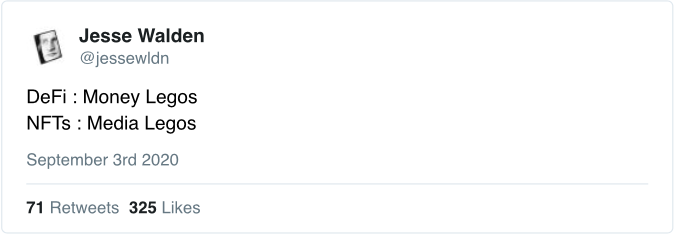
Each combination creates a new "Lego block," and after multiple combinations, you finally build a component that is several times more powerful than the original. This is why Chris says that composability is similar to compound interest.
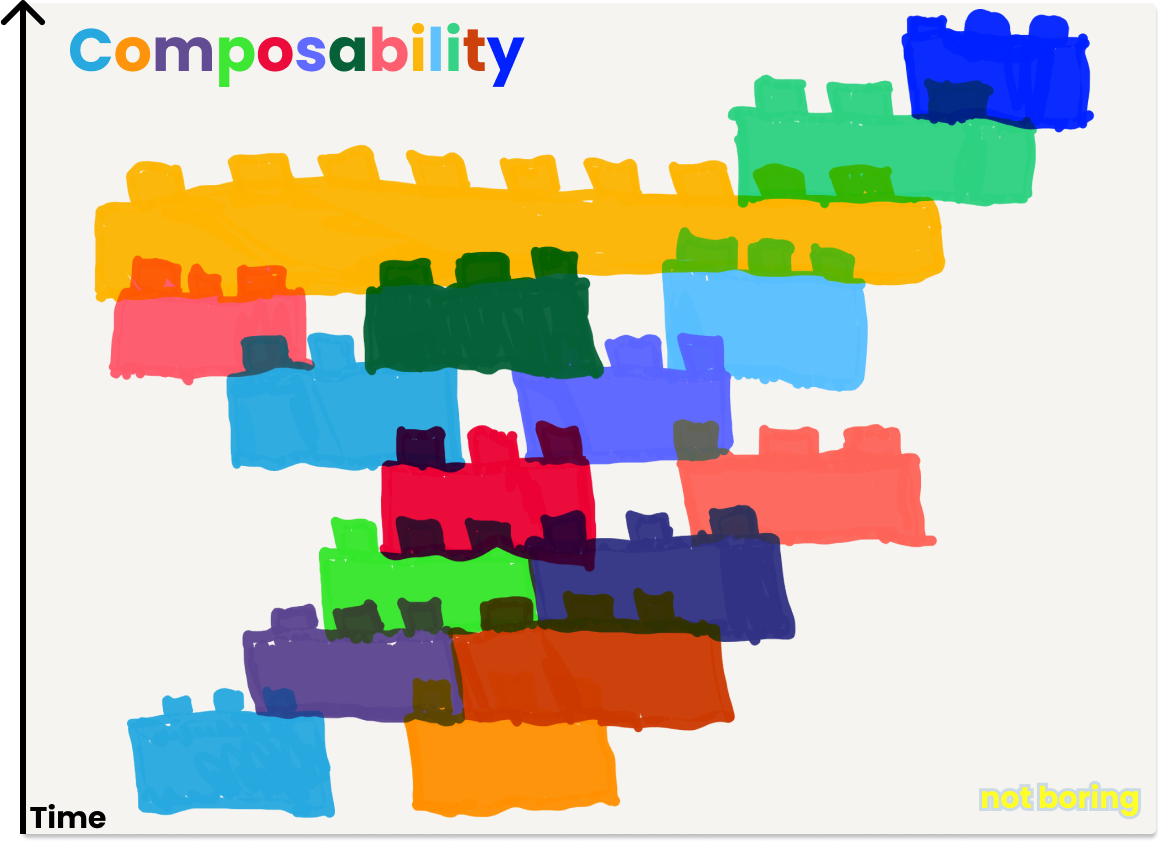
Since the construction of software cannot be quantified like interest, the benefits brought by composability are harder to measure intuitively compared to compound interest.
Let’s look at the following example: In June of this year, Scalar Capital co-founder Linda Xie delved into the feasibility of composability in Web3, stating that "composability is innovation."
Additionally, if you insert the Zora smart contract into the Mirror smart contract, you can convert articles into NFTs, thereby funding the author's work and giving fans the opportunity to become owners.
We also discussed the issue of composability in Not Boring, as it is closely related not only to Web3 but also to broader technological aspects.
Last Monday, I mentioned Composer, which allows users to "synthesize" components into different automated trading strategies, calling it a symphony—this product fully embodies the power of composability.
On Thursday, I quoted a statement from Stytch CEO Reed McGinley-Stempel about the power of APIs:
"In developer platforms, serendipity is one of the most powerful building blocks. If you can open up primitives that help developers, they can create better products."
This is not a new phenomenon; composability is the driving force behind the continuous development of open-source software.
Whether it's Web3 protocols, APIs, or open-source software, with composability, every builder can easily pick up where others left off, incorporate their own ideas, and leave the combined work for the next builder.
The power of composability extends beyond just software development. In my August article titled "Compounding Crazy," I wrote that
composability is the reason for the accelerating pace of human progress:
"Composability is the driving force behind the accelerating pace of innovation because it allows inventions derived from creative discoveries to become the foundation for even greater inventions, and this process can continue to evolve endlessly."
This idea is a reinterpretation of Tim Urban's perspective in a 2017 article on Neuralink published on the blog Wait But Why:
"The theories of macroeconomics give people the motivation to continuously create value, which means that people need to accelerate the pace of technological updates. Every time people invent a new technology, their capacity for invention is further enhanced, thereby accelerating the iteration of technology."
Although Urban himself did not label it as such, his article is the most comprehensive discussion of composability I have seen, as he does not specifically talk about Web3 or software but rather explores the issue of knowledge composability.
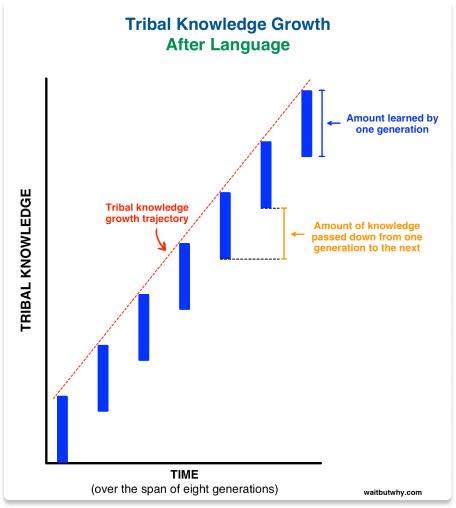
Wait But Why
Communication is the foundation for the combination of ideas. "If knowledge can be shared, then large-scale collective cooperation across generations can take place." The development of technology—from the printing press to the telegraph, from the telephone to the internet, and finally to Twitter—has made it easier for people to share knowledge. This allows ideas to continuously upgrade and evolve at a faster pace, and the process of combining ideas can also gradually accelerate.
While compound interest is easy to quantify, it is hard to observe directly. In contrast, the composability of software is even harder to quantify and detect, and among these, the composability of ideas is the most difficult to measure and perceive.
Engineers can selectively insert a specific API or Web3 protocol, but when people use a creative idea, they may not even feel it at all. If you want to explore this topic further, I recommend reading Questlove's book "Creative Quest," which left me with the impression that creation is a process of recombination.
For a long time, the composability of ideas has not received much attention because it is difficult to measure and track. However, all the progress and development we are experiencing are influenced by the composability of ideas. At the same time, these creative ideas are rapidly developing on each other's foundations.
We have only had the ability to access a global knowledge network for the past two decades. This knowledge includes practical knowledge, such as mathematical equations, SAFE, or various lectures, as well as inspirational knowledge—when a person or group accomplishes something, the next moment, people around the world can imitate it. This openness and inspiration of knowledge will inevitably lead to one surprising result after another.
In terms of inspiration, the most famous example is the breaking of the four-minute mile record. Between 1942 and 1945, the world record for running a mile dropped from 4 minutes 6.02 seconds to 4 minutes 1.04 seconds. This record stood for nine years until Sir Roger Bannister broke it and ran a mile in under four minutes; just 46 days later, someone else also ran under four minutes. In the following year, three runners broke the four-minute record in the same race.
It was because Bannister proved to others that running a mile in under four minutes was possible that other athletes were motivated to break the four-minute barrier.
I remember reading a book a few years ago called "The Rise of Superman," where the author described a phenomenon in extreme sports like skateboarding: once someone completes a specific trick, other skaters will imitate that move and even increase its difficulty. For example, if someone completes a 720-degree spin, the next skater will likely try for a 900-degree move.
Importantly, unlike software development, skateboarders cannot simply add a 180-degree spin on top of someone else's 720-degree spin because the skills in this sport cannot be combined. This means that each skater must complete all the moves themselves. However, what I want to express is that in any field, once something has a precedent, future generations can be inspired by it and build upon it to achieve even greater feats, moving from 720 degrees to 1080 degrees, and then to 1260 degrees.
Things that were unrealistic ten years ago have now become chips on the table.
This is also true in the startups and Web3 we are discussing today.
The distance between creativity and execution is shrinking, and composable applications and composable ideas are developing in parallel and supporting each other.
A new idea built on a series of old ideas can quickly combine with software made up of other combinations and be launched in weeks or even days. The project will quickly enter the market and spread through memes and sponsorships. After that, its technical and conceptual components will become new building blocks, preparing for the emergence of the next idea.
If the mutual combination of software is very similar to compound interest (like a bond with a 6% annual interest rate), then the compounding that occurs between interests is more akin to DeFi 2.0. Because in DeFi 2.0, people can stake their tokens to earn up to 0.9% every eight hours.

For your financial safety as a gambler, we have hidden the specific name of the project.
Small-scale gains, if accumulated quickly, will soon become a substantial amount.
If we take a step back, DeFi 2.0 is a typical example of this situation.
Decentralized finance (DeFi) became rapidly popular starting from the "DeFi Summer" of 2020. The total value locked grew from $1 billion on Memorial Day to $8 billion before Labor Day. While DeFi 1.0 brought new opportunities for on-chain lending, it also faced challenges regarding whether protocols could maintain liquidity. Initially, they offered incredibly high yields to persuade people to participate in staking and create liquidity, but once the yields dropped, your money would also vanish.
Therefore, less than a year after the DeFi Summer ended, OlympusDAO launched in March of this year, providing solutions to the common problems in DeFi and ushering in the era of DeFi 2.0. In short, DeFi 2.0 protocols will own liquidity themselves, rather than renting it as before. Olympus is not composed of DeFi 1.0 software but is a product formed by combining the ideas of DeFi 1.0, game theory, and the market's understanding of DeFi. Once people became accustomed to the high yields of DeFi, a 7000% APY no longer seemed like a scam.
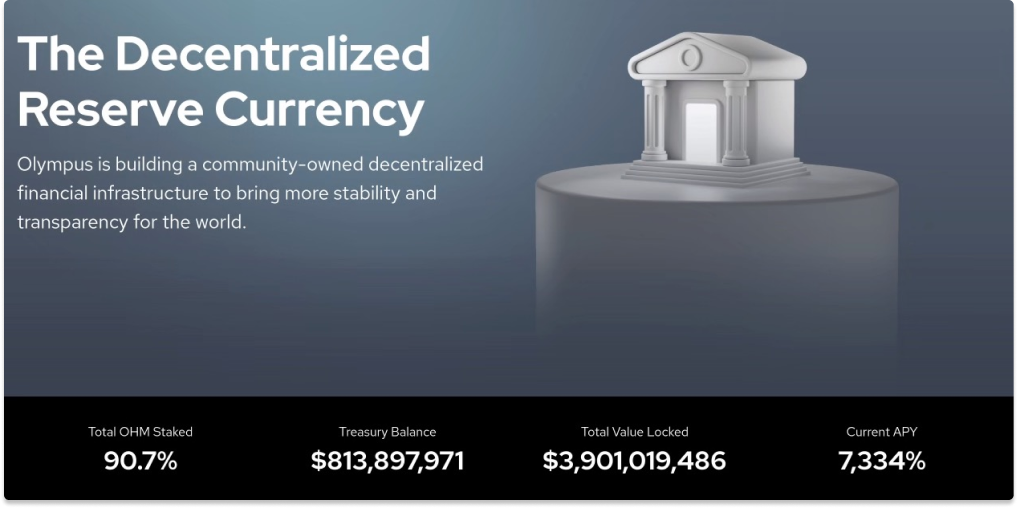
Olympus
Since March of this year, many other DAOs have been built on the foundation of Olympus, such as Klima, which utilizes Olympus's Pro version to integrate Olympus's DeFi Legos, while also having its creative Lego, which is what happens when you bind and stake certain types of assets but fall into a black hole. (We will soon write an article to explain this, so we can set aside those details for now and think more about the overall process.)
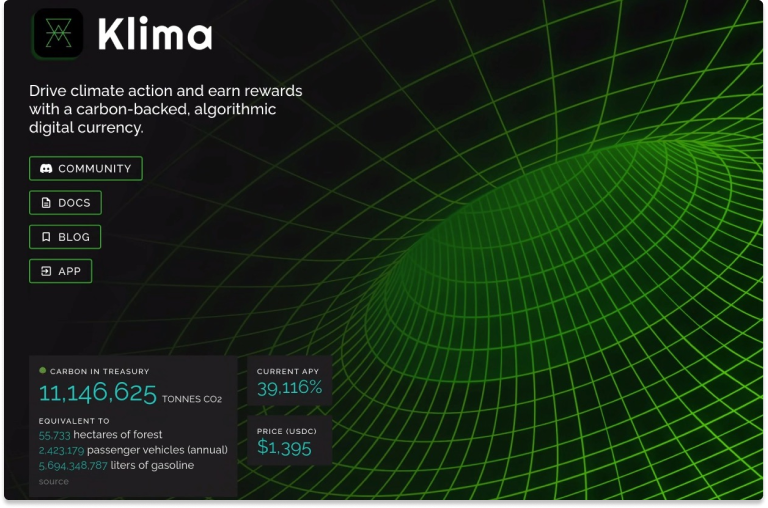
Klima
Olympus's main business is crypto assets, while Klima focuses on carbon offset projects, which are a type of financial instrument that, if utilized properly, could save the entire planet. At the same time, Klima is inspiring a new wave of builders to explore how to use similar mechanisms to protect our oceans or improve current medical conditions. Using DeFi to accomplish public welfare is a new creative Lego that will become a primitive supporting infinite possibilities for the future.
Without DeFi, there would be no Olympus; without Olympus, Klima would not exist; and without Klima, there would be no next DAO that can transfer real-world assets onto the chain to improve our lives and living environments. In this regard, the composability of software will become crucial, as it will make it relatively easy for the next entrepreneur to launch a product. However, we should also note that the composability of ideas is equally important.
This also includes the subsequent emergence of ConstitutionDAO.
Last Thursday, some people noticed that a copy of the U.S. Constitution was being auctioned. On Sunday, a DAO was established, and bidders began placing bids. By Thursday, we bid $40 million for this copy at Sotheby's auction but ultimately lost to Ken Griffin.
ConstitutionDAO itself is a beneficiary of both software composability and creative composability. The core team was able to combine ETH, Juicebox, Discord, Twitter, meme formats, DAO legal structures, people's understanding of crowdfunding, and their vague understanding of DAOs to create something new from scratch in just a few days, raising $47 million from 17,482 people in less than a week.

@ilemi on Dune
However, doing good also comes at a cost.
In a week, I saw a bunch of tweets saying the same thing: "Instead of buying a stack of white paper, why not spend the money on more important things, like researching cancer treatments, helping the homeless, saving the planet, etc." These appeals are indeed very reasonable but completely miss the point.
The comments suggest that this option set is binary and static, rather than composable and growing. After the emergence of ConstitutionDAO, other DAOs will solve these challenges more quickly.
After our bidding failure, many relevant individuals, including myself, pointed out that this event fully demonstrated the powerful potential of DAOs. Some critics attacked this optimistic view (like the video below).
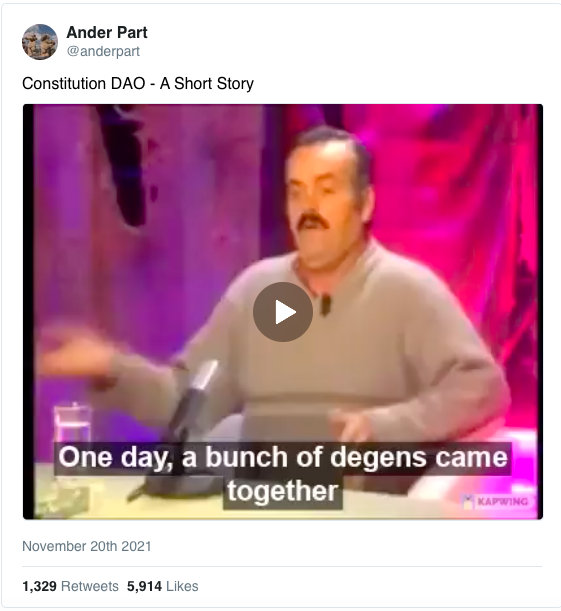
But these people have never been right because they are only seeing a small part of the picture.

ConstitutionDAO created another creative Lego. In the past few days on Twitter, many people have proposed launching various DAOs to buy NFL teams, soccer or rugby clubs, the Empire State Building, fossil fuel companies, buy enterprises and decentralize them, and raise funds for valuable causes. The gates of design have now opened to people, and I believe these ideas will become grander and more impactful.
Compared to traditional enterprises, DAOs operate in a more open manner, and all the developmental experiences during their operations will become inherent advantages for the next batch of DAOs about to launch, making it easier for them to combine. Even those inevitable drawbacks that arise due to time constraints, such as accidentally revealing one's maximum bid in a public wallet, regulatory policies preventing ownership division, or the need to pay high gas fees, will provide new directions for builders and outline a clearer roadmap for the next DAO.
ConstitutionDAO is also using the lessons learned to make improvements, as it is about to enter the next development stage.
Although DAOs have been around for five years, they have challenged the limits of DAOs in just a few days and spread this message through memes, allowing millions of people to accept a new creative Lego. With these ideas, they can combine them with other creative or software Legos for the next round of experimentation.
Although ConstitutionDAO has only been online for a week, the ideas behind it will further develop and combine. Overall, we are about to make significant progress and achieve rapid leaps. By this time next year, bidding for the U.S. Constitution may have become an interesting memory, but the ideas behind it will serve as the foundation for the next larger creation.
Interestingly, anyone can contribute ideas for this creation. You don’t need to learn how to code; you just need to combine existing components according to your ideas. This article is a product that mixes others' thoughts, and I hope it can inspire new ideas and projects.
Our future will be built from the "Lego blocks" we create today.










